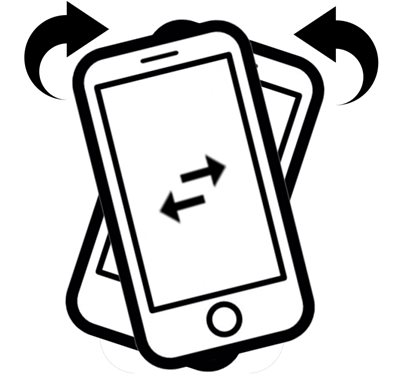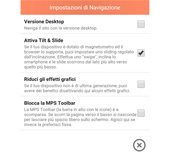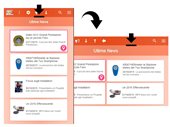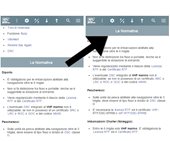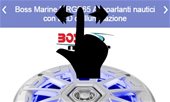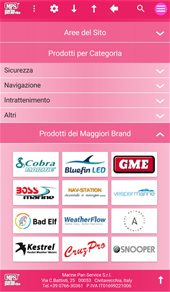Tilt & Slide
This feature uses the magnetometer inside the smartphone to provide an automatic slide carousel. By tilting our smartphone slightly, the slides slide automatically, without the need to act manually with your finger. The more your smartphone is tilted, the more slides slide quickly. The slides move from the highest to the lowest side, simulating gravity.
To activate it, click on the "tools" icon of the toolbar, from there select the relevant item.
The Tilt & Slide to be operated, needs a first swipe from the user and only from that moment is active. It operates in both portrait and landscape modes and its accuracy depends on the quality of the magnetometer inside the smartphone and the distance from magnetic sources of disturbance.
Smooth Rotation
If we are on a common mobile site and we are scrolling halfway through the page, when we rotate the screen passing for example from portrait to landascape, it is likely that we will not find the same information that we were viewing in portrait, but we will have to search higher up.
The Smooth Rotation meets this possible inconvenience, bringing the rotation back to the same height and also provides a transition effect to specifically hide the unwelcome graphical effects of realignment, which can occur on a browser at the time of rotation.
Tap Top
Allows you to click (Tap) on any titles to bring the paragraph to the "Top" of the screen. It works on all titles that on our site are recognizable with its own horizontal bar and where that title is not associated with other features (for example it is not actionable where the title is involved in scrolling menus).
At the first "Tap" the title is positioned at the "Top" of the page, with a second "Tap" we also remove the toolbar. This feature is obviously very useful to try to view the content of the entire paragraph related to that title and better focus on reading it.
Marine Pan Service has yet to plan the commercial channel for the dissemination of these technologies. We are therefore certainly interested in proposals.
